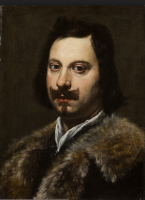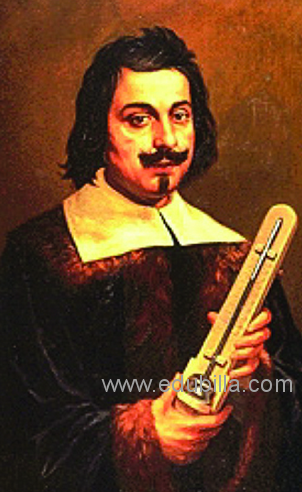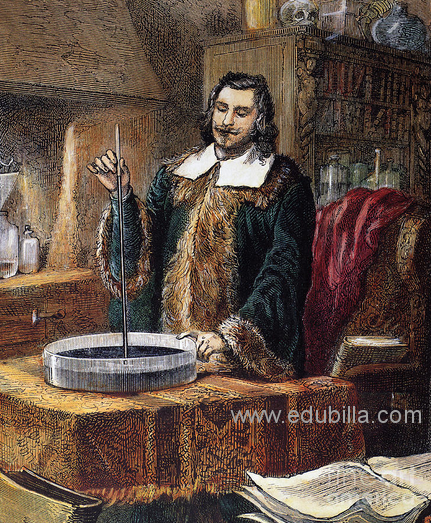










Evangelista Torricelli was an Italian physicist and mathematician, best known for his invention of the barometer, but is also known for his advances in optics.
Early life
Torricelli was born on 15 October in 1608 in Rome, the firstborn child of Gaspare Ruberti and Giacoma (Jacoba) Torricelli. His family was from Faenza in the Province of Ravenna, then part of the Papal States. His father was a textile worker and the family was very poor. Seeing his talents, his parents sent him to be educated in Faenza, under the care of his uncle, Jacobo, a Camaldolese monk, who first ensured that his nephew was given a sound basic education. He then entered young Torricelli into a Jesuit College in 1624, possibly the one in Faenza itself, to study mathematics and philosophy until 1626, by which time his father, Gaspare, had died. The uncle then sent Torricelli to Rome to study science under the Benedictine monk Benedetto Castelli, professor of mathematics at the Collegio della Sapienza (now known as the Sapienza University of Rome).Castelli was a student of Galileo Galilei."Benedetto Castelli made experiments on running water (1628), and he was entrusted by Pope Urban VIII with hydraulic undertakings."Because of this, Torricelli was exposed to experiments funded by Pope Urban VIII. While living in Rome, Torricelli became also the student of the brilliant mathematician, Bonaventura Cavalieri, with whom he became great friends.
Career
In 1632, shortly after the publication of Galileo's Dialogues of the New Science, Torricelli wrote to Galileo of reading it "with the delight of one who, having already practiced all of geometry most diligently and having studied Ptolemy and seen almost everything of Tycho Brahe, Kepler and Longomontanus, finally, forced by the many congruences, came to adhere to Copernicus, and was a Galileian in profession and sect".
Aside from several letters, little is known of Torricelli's activities in the years between 1632 and 1641, when Castelli sent Torricelli's monograph of the path of projectiles to Galileo, then a prisoner in his villa at Arcetri. Although Galileo promptly invited Torricelli to visit, he did not accept until just three months before Galileo's death. The reason for this was that Torricelli's mother, Caterina Angetti, died. "(T)his short intercourse with the great mathematician enabled Torricelli to finish the fifth dialogue under the personal direction of its author; it was published by Viviani, another pupil of Galileo, in 1674."After Galileo's death on 8 January 1642, Grand Duke Ferdinando II de' Medici asked him to succeed Galileo as the grand-ducal mathematician and chair of mathematics at the University of Pisa. Right before the appointment, Torricelli was considering returning to Rome because of there being nothing left for him in Florence.In this role he solved some of the great mathematical problems of the day, such as finding a cycloid's area and center of gravity. As a result of this study, he wrote the book the Opera Geometrica in which he described his observations. The book was published in 1644.Little was known about Torricelli in regard to his works in geometry when he accepted the honorable position, but after he published Opera Geometrica two years later, he became highly esteemed in that discipline."He was interested in Optics, and invented a method whereby microscopic lenses might be made of glass which could be easily melted in a lamp."As a result, he designed and built a number of telescopes and simple microscopes; several large lenses, engraved with his name, are still preserved in Florence.
Death
Torricelli died in Florence on 25 October 1647, a few days after having contracted typhoid fever, and was buried at the Basilica of San Lorenzo. He left all his belongings to his adopted son Alessandro. "Belonging to that first period are his pamphlets on Solidi spherali, Contatti and the major part of the propositions and sundry problems which were gathered together by Viviani after Torricelli's death. This early work owes much to the study of the classics."In Faenza, a statue of Torricelli was created in 1868 as a thank you for all that Torricelli had done in advancing science during his short lifetime.The asteroid 7437 Torricelli and a crater on the Moon were named in his honor.

